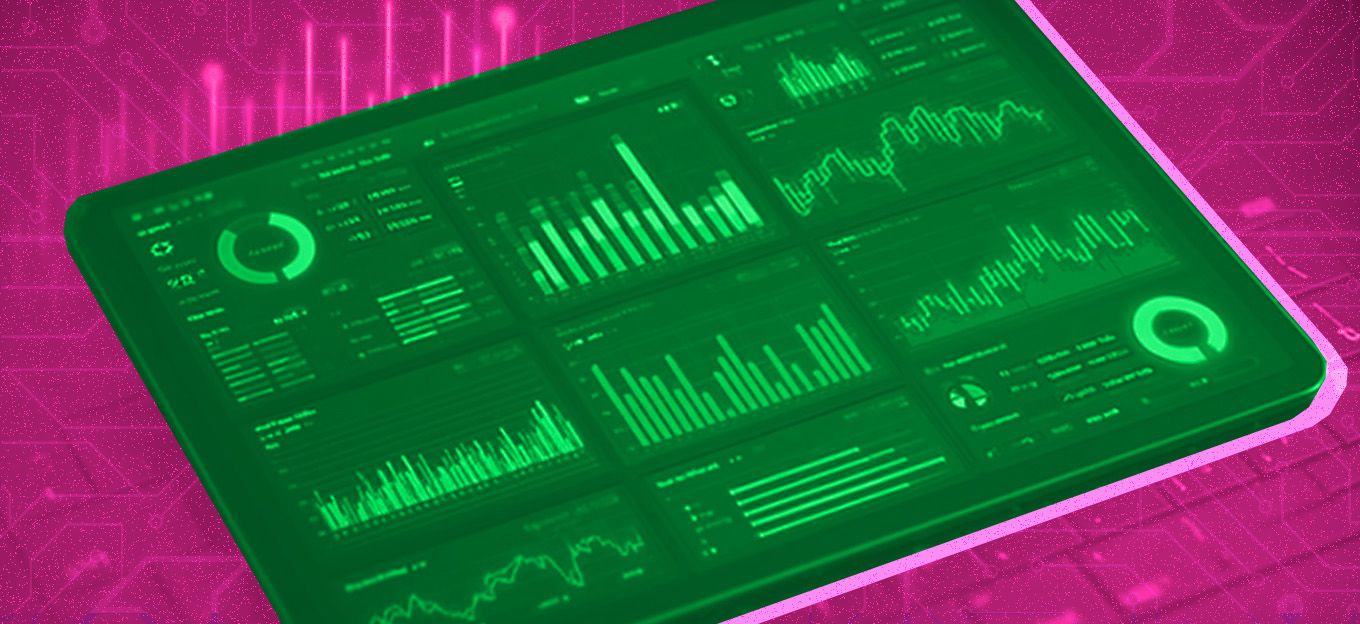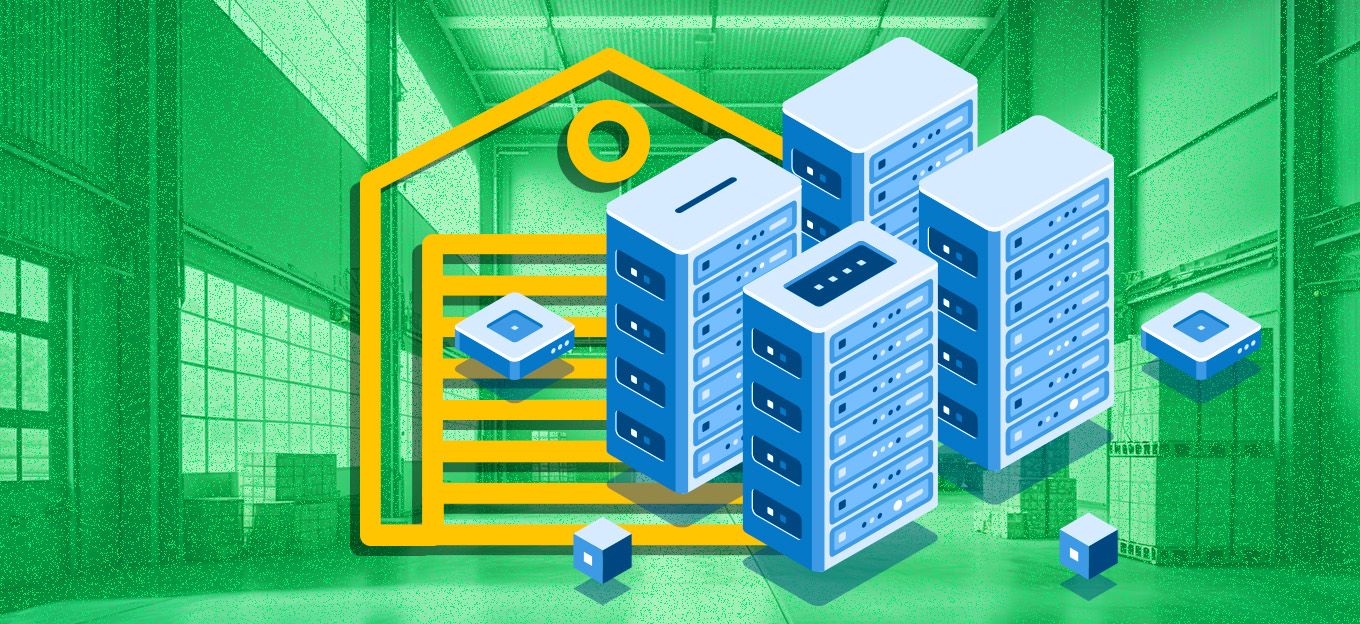18 Industrial IoT Applications & Their Benefits
18 Industrial IoT Applications & Their Benefits
- Last Updated: December 2, 2024
EMQ Technologies
- Last Updated: December 2, 2024



Industrial IoT applications, also known as IIoT applications, are the result of integrating complex physical machinery with networked sensors and software. The connected devices collect, share, and analyze data, converting it into actionable insights for industrial companies. This intelligence allows for more informed decision-making, leading to increased operational efficiencies, improved safety, and higher productivity.
Industrial IoT applications are revolutionary, transforming traditional industries and creating new opportunities. They're used in a range of industrial settings, from manufacturing to mining, agriculture to energy management, healthcare to transportation.
They are the driving force behind Industry 4.0, a term that describes the next level of automation and data exchange in the manufacturing sector.
The adoption of Industrial IoT Applications is not without challenges. These include issues around connectivity, interoperability, data security, and privacy.
However, in most cases, the potential benefits far outweigh the risks. Industries that embrace IIoT are becoming more connected, efficient, and agile. They are reshaping their operations, business models, and customer relationships while generating major cost savings.
Why Does the Industry Need IIoT Applications?
Enhanced Efficiency and Productivity
Industrial IoT applications offer unprecedented visibility into operations, enabling companies to streamline their processes.
Sensors and devices can monitor machine performance, energy consumption, production output, and much more. This data is then analyzed to identify inefficiencies and bottlenecks, leading to process optimizations and improved overall efficiency.
Furthermore, IIoT applications are driving productivity improvements. Real-time data allows for proactive maintenance, minimizing downtime and reducing waste.
Predictive analytics can forecast issues before they occur, thus enabling timely interventions. By automating routine tasks, employee productivity is also enhanced, freeing staff to focus on more strategic, value-adding activities.
Cost Savings and ROI Improvements
The efficiencies gained from IIoT applications translate into significant cost savings. Predictive maintenance, for example, can lower maintenance costs and extend equipment life.
Energy management systems can optimize energy usage, reducing utility bills. Supply chain visibility can minimize inventory costs and prevent lost sales due to stock-outs.
In terms of return on investment (ROI), the initial investment in IoT technology can be substantial. However, the long-term financial benefits, from cost savings to revenue growth, often justify the expense.
Moreover, business intelligence derived from IIoT data can lead to new revenue streams, further enhancing ROI.
Increased Safety and Risk Mitigation
Industrial IoT Applications can significantly improve safety in industrial settings. Sensors can monitor environmental conditions, equipment status, and worker health, alerting workers to potential hazards before they become critical. Automated systems can perform dangerous tasks, reducing the risk to human workers.
Real-time data and analytics can help companies anticipate and manage risks, from equipment failures to supply chain disruptions. In addition, IIoT technology can enhance regulatory compliance, helping companies avoid fines and reputational damage.
Improved Product and Service Quality
Quality is a critical competitive differentiator in today's market. Industrial IoT applications can elevate quality standards by enabling real-time monitoring and control of production processes.
Sensors can detect deviations from quality parameters, triggering corrective actions. Data analytics can identify the root causes of quality issues, leading to process improvements.
IIoT applications can also enrich the customer experience. Connected products can offer enhanced functionality, personalized experiences, and improved after-sales service. Real-time data can inform product development, ensuring offerings meet customer needs and expectations.
Examples of IIoT Applications by Industry
Let’s review how different sectors leverage IIoT applications to optimize their operations.
Manufacturing Applications
#1: Real-time Monitoring and Optimization
In the manufacturing sector, Industrial IoT applications have been instrumental in streamlining operations through real-time monitoring. Sensors on manufacturing equipment provide real-time data about the production process. This data can be analyzed to identify inefficiencies, bottlenecks, and areas for improvement, leading to optimized production workflows.
#2: Predictive Maintenance
With IIoT devices, manufacturers can monitor the condition of equipment and predict potential failures before they occur. This proactive approach saves time, reduces maintenance costs, and minimizes downtime, thus boosting overall operational efficiency.
#3: Quality Assurance and Defect Detection
IIoT devices can monitor product quality in real time during production, identifying any defects or irregularities. This immediate detection allows for swift corrective action, reducing waste and ensuring high-quality output.
Agriculture Applications
#1: Precision Farming
In the agriculture sector, Industrial IoT is driving the shift towards precision farming. Sensors and drones are used to monitor crop health, soil conditions, and weather patterns. The data collected is analyzed and used to make informed decisions about planting, fertilizing, and harvesting, leading to increased crop yields and sustainability.
#2: Automated Irrigation Systems
IoT sensors in the soil measure moisture levels and relay this information to an automated irrigation system. The system then adjusts the amount of water supplied to the crops based on the data, ensuring optimal watering and reducing water waste.
#3: Livestock Monitoring
Livestock monitoring is another area where IIoT applications are making a significant impact. Sensors attached to livestock can monitor their health, location, and behavior in real time. This data aids farmers in managing their herds more effectively, improving animal health, and increasing productivity.
Energy Applications
#1: Smart Grids and Energy Management
In the energy sector, Industrial IoT is revolutionizing how energy is managed and distributed through smart grids. These grids use sensors to gather real-time data on energy consumption and generation. The data is then used to balance supply and demand, prevent outages, and optimize energy distribution.
#2: Renewable Energy Monitoring and Optimization
IIoT applications are also crucial in managing renewable energy sources. For instance, sensors on wind turbines and solar panels provide real-time data on their performance. This data is used to optimize their operation, improving energy generation and efficiency.
#3: Predictive Maintenance for Energy Infrastructure
Just like in manufacturing, predictive maintenance is a key application in the energy sector. Sensors on energy infrastructure can detect potential issues in the grid before they escalate, allowing for timely maintenance. This proactive approach enhances the longevity of the infrastructure and reduces downtime.
Transportation and Logistics Applications
#1: Fleet Management and Predictive Vehicle Maintenance
In the transportation and logistics sector, fleet management is made easier with Industrial IoT applications. Real-time tracking of vehicles helps in optimizing routes, reducing fuel consumption, and improving service delivery. Predictive maintenance of vehicles can be done by monitoring their condition and performance, reducing breakdowns, and improving fleet efficiency.
#2: Smart Warehousing
Smart warehousing is another area where IIoT shines in transportation and logistics. Sensors and RFID tags track the location and status of goods within the warehouse. This real-time visibility improves inventory management, speeds up order fulfillment, and reduces errors.
#3: Real-time Cargo and Shipment Tracking
Real-time cargo and shipment tracking is another significant application of IIoT in this sector. GPS and sensor technology provide real-time updates on the location and condition of cargo. This increased visibility enhances supply chain transparency, improves customer service, and reduces losses.
Healthcare Applications
#1: Remote Equipment Monitoring
In the healthcare sector, remote monitoring of medical equipment is a key application of Industrial IoT. Sensors on medical devices provide real-time data on their performance and status, allowing for timely maintenance and preventing unexpected equipment failure.
#2: Predictive Maintenance for Medical Devices
Similar to other industries, predictive maintenance is making a major impact in healthcare. By monitoring the condition of medical devices, potential failures can be predicted and prevented, ensuring uninterrupted patient care.
#3: Safety and Compliance Tracking
Finally, Industrial IoT plays a crucial role in safety and compliance. Sensors can monitor the environment in healthcare facilities, ensuring it meets safety and regulatory standards. This helps in preventing health risks, ensuring patient safety, and maintaining compliance with regulations.
Mining Applications
#1: Automated and remote-controlled machinery
In the mining industry, Industrial IoT applications have brought about significant safety and efficiency improvements. Automated and remote-controlled machinery, enabled by IoT, reduces the need for human presence in dangerous mining environments. It also allows for more precise and efficient extraction, reducing waste and enhancing productivity.
#2: Real-time resource tracking
Real-time resource tracking is another application of IIoT in mining. IoT devices monitor the location and quantity of resources, providing real-time data for better resource management. This helps mining companies optimize their operations, reduce waste, and increase profitability.
#3: Safety and environmental monitoring
Safety and environmental monitoring, enabled by IIoT, is crucial in the mining industry. IIoT devices monitor air quality, temperature, and vibration levels in mines, providing real-time data for safety management. This helps prevent accidents, protects workers' health, and ensures compliance with environmental regulations.
Best Practices for IIoT Application Adoption
Clearly Define the Goals
Successful IIoT implementation starts with a clear vision of what you want to achieve. Whether it's improving efficiency, reducing costs, enhancing safety, or elevating quality, your goals will guide your IIoT journey.
Once your goals are defined, identify the key performance indicators (KPIs) that will measure your progress towards these goals. These could include metrics on production output, energy usage, maintenance costs, safety incidents, or quality defects.
Embrace Scalability
IIoT applications should be scalable to accommodate future growth and technological advancements. Start small, with a pilot project, to test the technology and prove its value. Once successful, you can gradually scale up, expanding the IIoT application across your operations.
Scalability also means being flexible and adaptable. The technology landscape is constantly evolving, and your IIoT solution should be able to adapt accordingly. Opt for open, interoperable systems that can integrate with existing and future technologies.
Prioritize Security
Data security is a critical concern in the IIoT world. Industrial IoT Applications generate vast amounts of sensitive data, which can be a target for cyberattacks. To protect your data and your operations, you must prioritize security from the outset.
Invest in robust security measures, such as encryption, firewalls, and intrusion detection systems. Implement strong access controls and user authentication. Regularly update and patch your systems to address security vulnerabilities. And educate your staff on the importance of data security and the role they play in safeguarding your IIoT ecosystem.
Process Data at the Source
Processing data at the source whenever possible—using edge computing—is a key strategy in IIoT applications. This involves analyzing data near where it's generated, rather than sending it to a centralized server. Edge computing can reduce latency, improve response times, and lessen the load on your network.
Edge computing is particularly beneficial in industrial settings where real-time decision-making is critical. It allows for immediate insights and actions, enhancing efficiency, safety, and quality. However, edge computing requires powerful, reliable hardware and software, so ensure your IIoT infrastructure can support it.
Ensure Staff Understands New Applications
Successful IIoT adoption requires a skilled, knowledgeable workforce. Your staff must understand the new technologies and systems, how to use them, and why they're important. This requires ongoing training and education.
Consider creating a cross-functional IIoT team, with representatives from IT, operations, and business functions. This team can drive the IIoT initiative, ensuring it aligns with business objectives and can serve as a resource for other staff members.
The Most Comprehensive IoT Newsletter for Enterprises
Showcasing the highest-quality content, resources, news, and insights from the world of the Internet of Things. Subscribe to remain informed and up-to-date.
New Podcast Episode

Moving Past the Pilot Phase in IoT and AI
Related Articles





